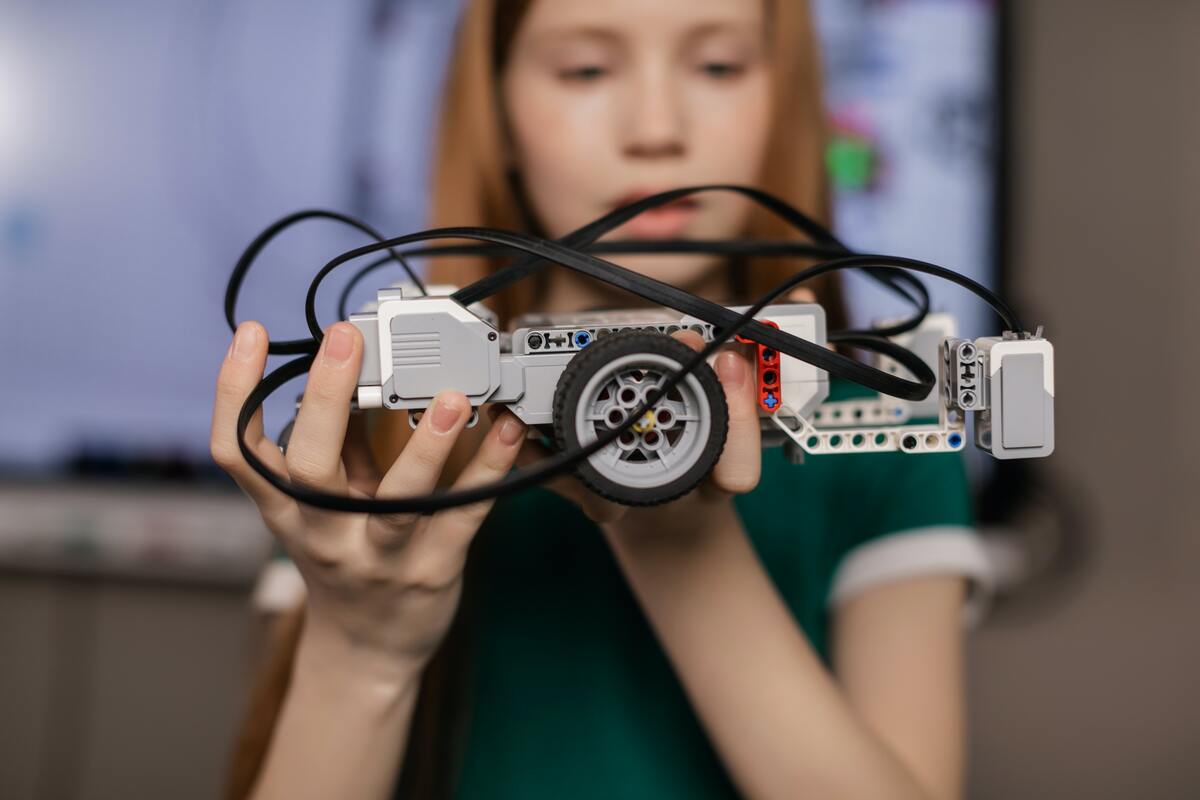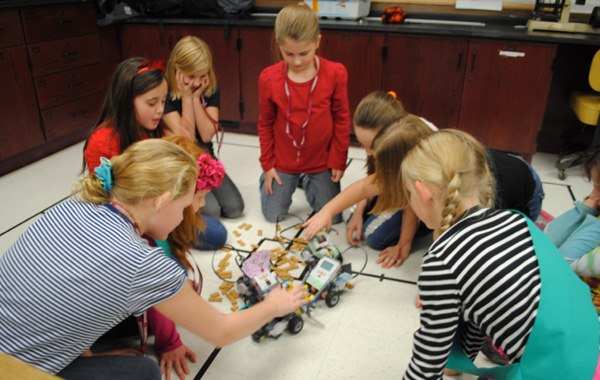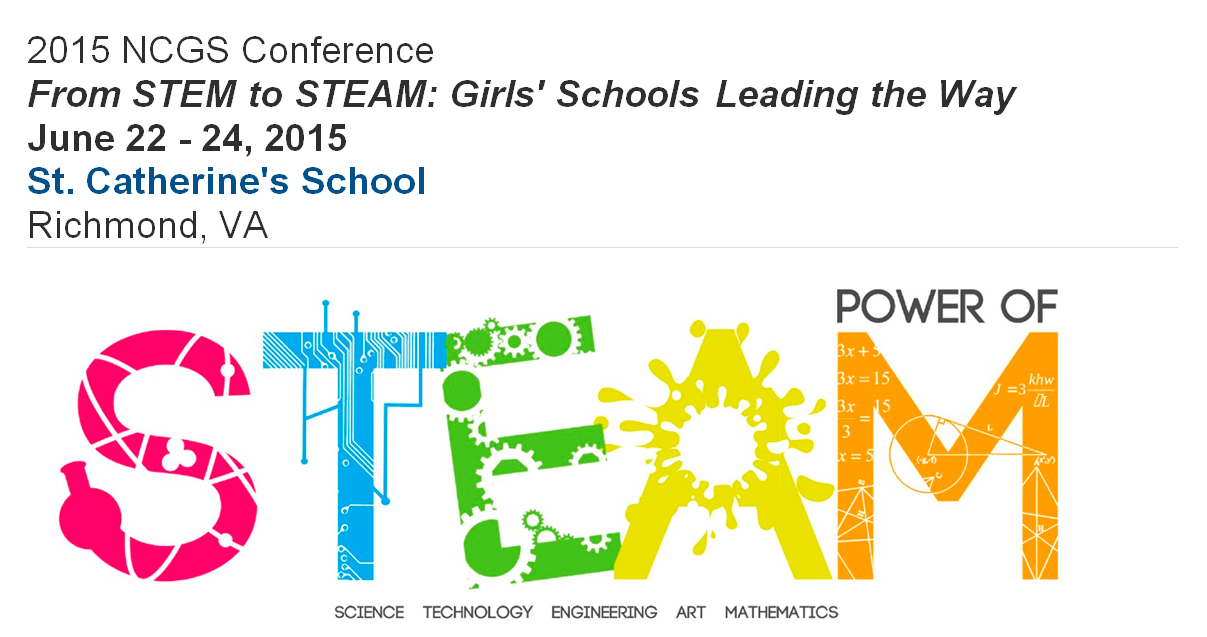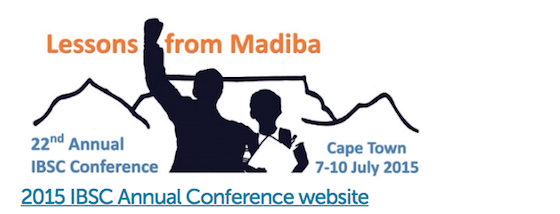
Undoing stereotypes
An article published on 13th January 2022 in Fundació Bofill.
The professions linked to the scientific and technological field are among the most prestigious, best paid and with the greatest capacity for influence. However, only 35% of those enrolled in university studies in this field in Europe are women. Some schools and universities have promoted projects to reduce this gap, but the experts call for public policies that imply a transformation in all centers.
“We have time until we are 10 years old to change stereotypes about vocations. Then it's too late." It is the conclusion of a study in the International Journal of Science Education and that Maite Novo Molinero, coordinator of the Experimental Sciences Teaching area at the Rovira i Virgili University (URV) and teacher of future teachers, always stands out in her classes.
For this reason, she considers that it is essential to offer children, from an early age, "a backpack full of varied experiences" so that they can see "normal, possible and desirable" to dedicate themselves to any profession.
However, in practice this is not done. According to UNESCO data, in most European countries, women represent less than 45% of the scientific-technological community and only 35% of students enrolled in STEAM careers are women. This English acronym encompasses the disciplines of science, technology, engineering, arts –such as architecture and urban planning– and mathematics. They are strategic sectors, which include some of the professions with the greatest future, the best remuneration and the greatest capacity to influence the social, technological and ecological challenges of today's society and of the future.
Another study by the European Commission finds that the proportion of men in the digital sector is 3.1 times higher than that of women, and that only between 10 and 15% of women work in the field of artificial intelligence, one of the leading ones. All this taking into account that, according to experts, by 2025 7 million jobs in Europe related to science and technology will have to be filled.
STEAM in the classroom
Many educational centers have wondered how to promote STEAM vocations and how to reduce a gender gap that is widening with each course. And it is that, according to a study in the Science journal, at only six years old, girls are considered less bright than their peers and, as they grow older, they lose interest in subjects such as Mathematics, Technology, Chemistry and Physics.
One of these centers is the Doctor Alberich y Casas de Reus School, which is in the last year of STEAMcat implementation. This innovation program of the Generalitat helps to develop educational proposals to promote interest in science and technology.
"We did not want to make the STEAM hour, but to include these disciplines in the programming of all subjects and offer globalized proposals that generate an impact on society and that take into account the gender perspective," explains the head of studies, Anabel Barragán Cabezas .
This year she has new projects underway for all classes. In early childhood education they have designed the Gaudí space, where they mix artistic, technological and engineering activities. In primary, teachers offer proposals to students, some of which are carried out in the regular class and others in the STEAM classroom. The fact that the choice is voluntary makes it possible to observe the interests of the students and detect if there are relevant differences between boys and girls.
They have also participated for years in the First Lego League international competition, in which a scientific-technological challenge must be solved. “At first I was tired of seeing how the boys programmed and the girls drew the letters on the posters,” says Barragán Cabezas. Through persistent work in the classroom, they have been reducing differentiations like this, but she confesses that "school is a microclimate" and that "if the environment does not support it, it becomes very difficult."
At the Pla de les Vinyes School, in Santa Coloma de Cervelló, they work side by side with the Polytechnic University of Catalonia (UPC) within the framework of the AquiSTEAM program, which aims to break the sexist stereotypes associated with technology in students between 9 and 14 years old, and make visible new female models.
This course they will work on the new design of the school garden. "We saw that the land was not very productive and that we had problems with the roots of some trees," explains Marta Garcia, a third-grade tutor and one of the project's coordinators. She will be helped by the architect Judit Taberna, with whom they will define the needs of the orchard and the actions they will carry out.
Experiences like this, emphasizes Novo Molinero, contribute to increasing the "scientific capital" of children and adolescents, and can occur both inside and outside the classroom. This is the case of the first "Great Lestosteam Science Fair", organized by the Lestonnac school of Tarragona within the framework of Science Week, in November. About 170 students of all ages participatedm and carried out an experiment in real time in teams and presented it to the public.
"One of the objectives was for students and families to meet outside of school hours to do science," emphasizes Marc Vilamajor, teacher and digital coordinator of the center. "Working in an interdisciplinary way -he considers-, promoting research and experimentation based on real problems, can be one of the ways so that we do not lose so much the interest of the girls as the data shows".
What weighs more when defining vocations?
The family ⏤experts point out⏤ is the most direct reference for children and one of the most powerful to inspire professions. "If you are not encouraged to develop certain skills from a young age, it is difficult for you to do so when you grow up because you will lack role models," says Milagros Sáinz Ibáñez, director of the Gender and ICT research group at the Open University of Catalonia (UOC) .
Deconstructing the symbolic messages that boys and girls receive –from the environment, advertising, series and movies, video games, social networks, toys, shop windows...– is another key task, according to Karina Gibert, director of the center Researcher Intelligent Data Science and Artificial Intelligence (IDEAI) of the UPC and Vice Dean of Ethics and Equality of the College of Computer Engineering of Catalonia. "In order for a girl to be able to make a free choice and dedicate herself to technology, there must be someone who offers her compensation messages," she says. "If we leave everything to inertia, what comes to them is that they must dedicate themselves to social activities and care."
To get ideas, Novo Molinero recommends the cartoon series “Dinosaur Train” (PBS Kids) and some games: “The cat in the hat”; "The Magic School Bus"; "Ada Twist, scientist"; Storybots; "Octonauts"; Dino Dana or Izzy's Koala world. He also advises talking about science with a family member who is dedicated from the present day –Covid, the volcano of La Palma...– and taking advantage of a trip to the park, for example, to ask questions about the environment. "It's about science and technology being part of children's lives," she says.
Secondly, the teaching staff plays a very relevant role in the choice of studies and academic itineraries. In primary school, one of the problems pointed out by the experts is that the vast majority of teachers do not come from the scientific or technological field, although, if they are tutors, they must evaluate this knowledge.
For this reason, one of the first things that Novo Molinero works on with his students is "to understand what science and technology are, which has nothing to do with being gifted or not." And she gives as an example that the scientific method –based on developing hypotheses, arguing and looking for evidence– is not only useful for one type of profession, but also for learning throughout life.
Gibert is also in favour of computational thinking ⏤related to ordering sequences of reasoning, analyzing a scene of reality to decompose it and treat it by fragments, and developing lateral thinking⏤ as part of the basic skills of primary education.
In secondary school, apart from increasing the number of technologists dedicated to teaching, the challenge lies, according to Sáinz Ibáñez, "in intervening on identity processes", because this is where the gender stereotypes associated with professions and the moment in which very relevant decisions are made linked to academic and professional interests.
These preconceived ideas, as shown by studies –including those led by Sáinz Ibáñez–, lead girls to undervalue themselves in the STEAM field, while boys tend to overvalue themselves. And this despite the fact that research carried out between 1994 and 2011 in more than 30 countries concludes that female students systematically get better results in all subjects.
A bias that not only harms them: "Boys make decisions thinking they have natural abilities for STEAM, while girls with very good grades in these subjects discard engineering and choose the field of health, more consistent with gender roles”, details Sáinz Ibáñez.
In another study, the researcher shows that many teachers are not sufficiently aware of this vocational segregation by gender. "This type of academic sexism ⏤the research points out⏤ influences the messages they transmit and the advice they issue regarding the outlets that best fit the abilities of their students", and that often end up becoming “self-fulfilling prophecies"".
Similarly, the study notes that parents "usually expect more from their sons than from their daughters when it comes to to performance in STEAM subjects”, which leads them to “encourage daughters to choose feminized careers such as Medicine or Education, instead of encouraging them to study degrees linked to technology or pure sciences”.
A problem of equity and technological development
What does it mean that there are not enough women in the scientific and technological field? First, a fairness issue. In a society in a constant process of digital transformation, Gibert emphasizes that "not being part of this world takes you away from the center of modernity and prevents you from influencing".
According to the latest Barometer of the technology sector in Catalonia, ICT companies represent 10% of the country's GDP and are expected to continue growing. Although they represent one of the main economic engines, women occupy only 26% of jobs and fewer –8.6%– hold technical positions, according to data from the Cybersecurity Agency of Catalonia.
For Carme Fenoll Clarabuch, director of the UPC's Department of Culture and Community, it is "a social problem of the first order". "We are perpetuating the vicious circle in which women earn less, have fewer positions of responsibility and ask for more reductions in working hours," she denounces.
The lack of representation of women in the STEAM field also implies, as Sáinz Ibáñez argues, that "their needs are not represented".
Examples are not lacking. Glòria Macià Muñoz, data scientist at the pharmaceutical company Hoffmann-La Roche, indicates that "until women have reached leadership positions, databases have not been created to collect information on the side effects of certain medications in pregnant women" .
In the technological field, Amazon had to withdraw an artificial intelligence to hire staff because an investigation by the Reuters agency showed that it penalized women. The algorithm had been trained from the résumés of the workers and, since the technological positions were occupied mainly by men, it had “learned” that they were the best candidates.
Also, many European countries did not require until 2011 that female dummies be included in car safety tests. And another example: a team of researchers from Brazil revealed that Google Translate algorithms associated men with technical professions and women with those related to care, when translating into English from languages that do not differentiate by gender, such as Chinese, Japanese or Turkish.
The challenges of the universities
The girls who enroll in STEAM degrees are still a minority: at the UOC they represent only 23.6% and at the UPC, 26.9%. However, these are figures that grow slightly year after year. The first year students of the UPC are now 29.2% of the total. Although it is still below the 30% goal that the university has set for 2024, it is 21% more than five years ago.
Given these data, and taking into account that many vocations are defined in primary school, Gibert is clear about the path to follow: "Make ourselves visible in schools to be an inspiration and generate change." Apart from the AquiSTEAM ⏤of which she is also one of the leading scientists⏤, the UPC coordinates a group of female engineers who talk about their profession with the program “An engineer in each school”. In addition, on the International Day of Girls in ICT, they organize talks in middle and high school to encourage female students to consider scientific and technical careers within the “100tifiques” program.
The director of IDEAI also leads the scientific direction of the "Top Secret Rosies" project, which offers training in artificial intelligence to girls in their last year or recently graduated from a STEAM career. "We thought it was the fastest way to create benchmarks and have an impact on the market, but the goal is to reach all educational stages," she explains.
Another project to highlight is the Inspira STEAM of the URV, in which researchers from the area of engineering visit sixth grade students to help them break stereotypes that surround the professions in which they dedicate themselves and encourage them to maintain their self-esteem in these areas. At the university itself, Novo Molinero is promoting the first edition of science clubs as an extracurricular activity for schools with vulnerable students.
The weak point of these programs, as recognized by Fenoll Clarabuch, is that they are based on volunteering: “The intention is good, but we don't get everywhere”. For this reason, he believes that they should be established "in an official, general and professionalized way" and regrets that the Department of Education "has not included the universities" in the STEAMcat program.
The new degrees, an opportunity to change the paradigm
New degrees such as Artificial Intelligence at the UPC, which has been launched with practically 50% of the students women, are seen as an opportunity to provoke a change in the technological discourse. "We ran a campaign to explain that an artificial intelligence specialist can also have an impact on health, the environment, art... with the aim of questioning more girls," says Gibert. The figures also show that technological studies with the prefix "bio" are among those that attract the most future female engineers.
Some feminist currents do not share the strategy of relating technology to more traditionally feminine spheres, but the experts agree that opening up to more sectors can help. "I don't know to what extent it is a natural or cultural issue, but whenever I have organized technological activities linked to the social field, more girls have signed up," Macià Muñoz gives as an example. Based on her experience, she defends that these types of initiatives reserve a number of places for girls who have been left on the waiting list so that the groups are more equal.
Beyond the debate about how and even "if it is a question of justice", Novo Molinero insists that incorporating more women into technology teams improves the quality of products. The reason is simple: “the more different perspectives are included, the more knowledge is generated”, he points out. For this reason, and for not leaving talents behind, it calls for this diversity to be understood in the broadest sense: gender, social, cultural, ethnic... “If you want to live in a world designed for you ⏤Gibert agrees⏤ the best thing to do is to be there when they think about it”.



